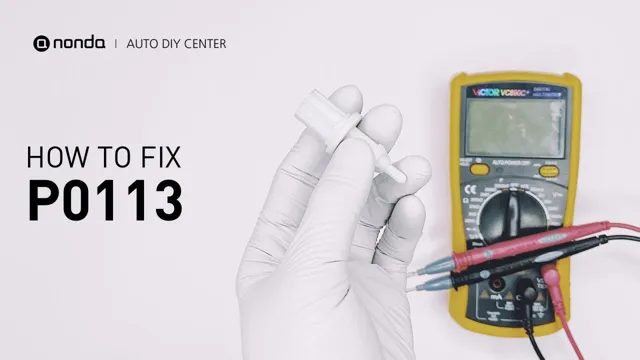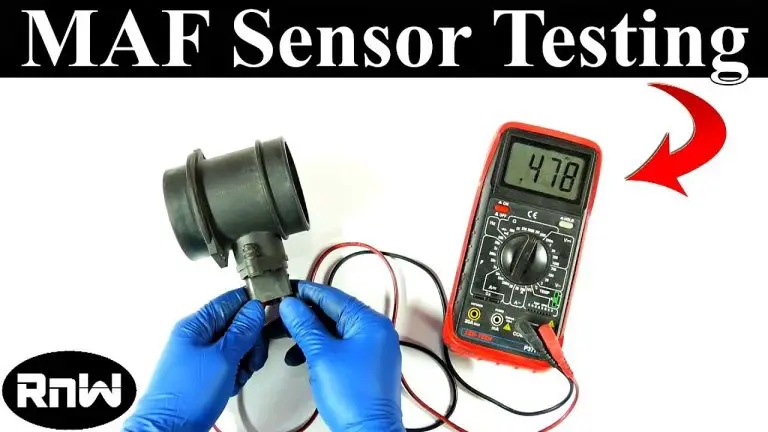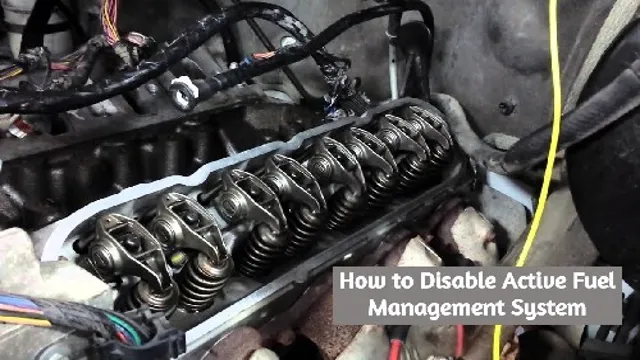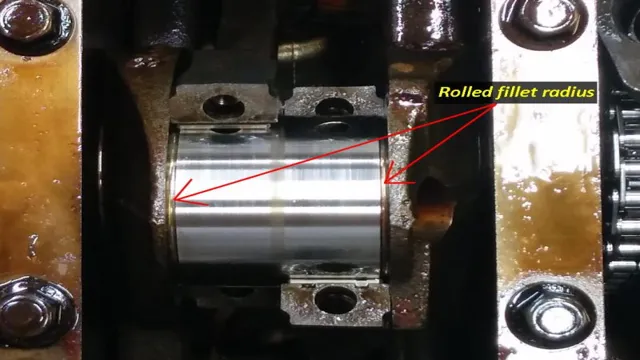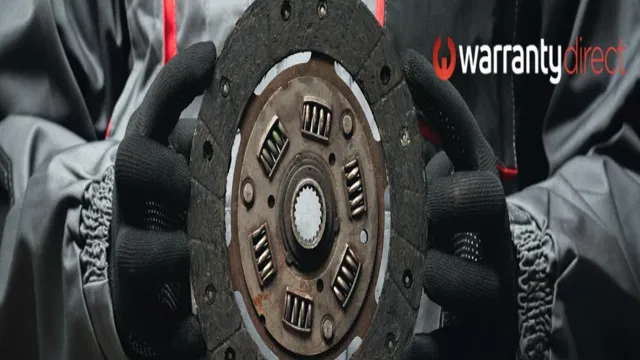Unraveling the Mystery of P0113 Code: How to Fix Your Car’s Coolant Temperature Sensor Issues
Is your check engine light on? Are you seeing a P0113 code? Don’t panic, we’ve got you covered. The P0113 code is a common issue in many vehicles and it’s typically linked to your Intake Air Temperature (IAT) sensor malfunction. This sensor plays a critical role in your car’s engine performance as it helps measure the temperature of the air entering your engine.
When your IAT sensor fails, it results in the wrong readings being sent to your car’s computer system, causing it to run inefficiently and potentially leading to further damage. The good news? Fixing the P0113 code is relatively easy and straightforward. In this article, we’ll discuss some of the most common causes of the P0113 code and provide some handy DIY tips to help you resolve the issue and get your car back on track.
So, if you’re ready to learn how to fix the P0113 code and avoid costly trips to the mechanic, keep reading!
Introduction
If you’re getting the P0113 code on your car, it’s indicating an issue with the intake air temperature sensor. This could be due to a variety of reasons, including a malfunctioning sensor itself, damaged wiring or connections, or a faulty engine control module. Fortunately, fixing this code isn’t too difficult, and can be done with a few simple steps.
First, start with replacing the faulty sensor, which is usually located near the air filter or intake manifold. Next, check the wiring and connectors for any wear or damage, and repair or replace them as needed. Lastly, reset the codes using an OBD-II scanner, which should clear the error code and restore normal functioning.
By following these steps, you should be able to fix the P0113 code and get your car running smoothly again.
Understanding the P0113 Code
If you’ve ever experienced the P0113 code, you’re not alone. This code is a common problem that many drivers face. It indicates an issue with the intake air temperature (IAT) sensor.
This sensor is responsible for monitoring the temperature of the air entering the engine. When it malfunctions, it can cause a number of problems with your vehicle, such as decreased fuel efficiency and poor performance. But, what causes this issue? Sometimes it’s simply a faulty sensor, but it can also be caused by a damaged wire or connection, or a problem with the sensor’s circuit.
If you’re experiencing this problem, it’s important to get it checked out by a professional to ensure your car is running at its best.

Symptoms of P0113 Code
The P0113 code is an indication of a problem with the Intake Air Temperature (IAT) sensor in your vehicle. This sensor is responsible for measuring the temperature of the air entering the engine, which is a crucial piece of information that helps the Engine Control Module (ECM) to adjust the air/fuel mixture for optimal performance. Some of the most common symptoms of a P0113 code include poor engine performance, reduced fuel efficiency, and a loss of power while driving.
Additionally, you may notice the Check Engine light on your dashboard, as well as rough idle or stalling when you come to a stop. It’s important to address these symptoms promptly to ensure the health and longevity of your vehicle. If you suspect a problem with your IAT sensor, it’s best to have it diagnosed and repaired by a qualified mechanic.
Fixing the P0113 Code
Are you struggling with the P0113 code? Don’t worry, it’s a common issue that can be resolved easily. The P0113 code stands for Intake Air Temperature Sensor Circuit High Input, which means the engine control module is receiving a signal that the intake air temperature is above the normal range. This can cause various problems such as reduced fuel efficiency, rough idling, and even engine stalling.
Luckily, fixing this issue is straightforward. First, check the wiring and connector of the intake air temperature sensor. If they seem fine, then replace the sensor.
After installation, reset the codes and start your engine again. The P0113 code should no longer appear, and your car should run smoothly again. Remember, keeping up with regular maintenance can prevent issues like this from occurring in the first place.
Step 1: Check for a Faulty Intake Air Temperature Sensor
If you are encountering the P0113 code, the first thing you need to check is your intake air temperature sensor or IAT sensor. This sensor helps the engine control module determine the air density and make adjustments to the fuel injection timing and ignition timing accordingly. If the IAT sensor is not functioning correctly, it can cause the engine to run rich, leading to decreased fuel efficiency and potential damage to the catalytic converter.
To fix this issue, you can first inspect the sensor for any physical damage or loose connections. If there are none, you can use a multimeter to test the sensor’s resistance values and compare them to the manufacturer’s specifications. If the values are off, you will need to replace the sensor.
By fixing the IAT sensor, you may be able to solve the P0113 code and improve your vehicle’s overall performance.
Step 2: Replace the Faulty Sensor
If you’ve determined that the P0113 code is indeed caused by a faulty Intake Air Temperature (IAT) sensor, don’t worry, replacing it isn’t too complex. First, locate the sensor in your vehicle’s air intake system. It’s typically located near the air filter box, and you may need to remove some parts to access it.
Once you’ve found it, disconnect the electrical connector and remove the faulty sensor. Keep in mind that the IAT sensor can be fragile, so handle it with care. Next, install the new sensor and reconnect the electrical connector.
Clear the codes using an OBD-II scanner and test drive your vehicle to make sure the issue has been resolved. Remember that using genuine OEM parts is always recommended to ensure proper fit and function. With these simple steps, you should be able to replace the faulty sensor and clear the P0113 code without much hassle.
Step 3: Clear the Code and Test Drive the Vehicle
Now that we have determined that the P0113 code is for the IAT sensor, let’s look at how to fix it. First, we need to locate the IAT sensor, usually found near the air intake. Once found, we need to check the wiring and connections for any damage, corrosion, or loose connections.
If there is any damage, it is best to replace the sensor. Next, we need to test the IAT sensor using a multimeter. The sensor should show between
5 and 5 volts, depending on the temperature. If the sensor is not within this range, it is not functioning correctly and needs to be replaced. Once we have replaced the sensor, we need to clear the code from the vehicle’s computer using an OBD-II scanner.
Finally, it is best to test drive the vehicle to ensure that the code does not appear again and that the vehicle is running correctly. By following these steps, we can fix the P0113 code and ensure our vehicle is running smoothly.
Preventative Measures
If you’re seeing the P0113 code show up on your car’s OBD-II scanner, it’s important to take steps to identify and fix the underlying problem to prevent further damage to your vehicle. This code typically indicates an issue with the intake air temperature (IAT) sensor, which can cause a range of problems with your engine’s performance and efficiency. One of the most important preventative measures you can take is to ensure that your air filter is clean and free of debris that could interfere with the sensor’s readings.
You may also want to inspect the wiring and connector for the IAT sensor to ensure that they’re in good condition and that there are no loose connections. In some cases, simply cleaning or replacing these components can resolve the issue and clear the P0113 code, but if the problem persists, you’ll want to take your car to a qualified mechanic for a more in-depth diagnosis and repair. By taking the time to address this issue early on, you can avoid more costly problems down the line and keep your car running smoothly for years to come.
Regular Maintenance of the Intake Air Temperature Sensor
Regular maintenance of the intake air temperature sensor is essential to keep the engine running efficiently. The intake air temperature sensor plays a crucial role in determining the air temperature entering the engine, which affects the fuel mixture’s accuracy. When dirty or damaged, it can cause a decrease in power output or even engine damage, resulting in costly repairs.
To avoid such predicaments, it is necessary to take preventative measures such as cleaning the sensor regularly and replacing it when needed. Suppose you notice a decrease in fuel efficiency or an illuminated check engine light. In that case, it is best to have a professional mechanic inspect the sensor to avoid potential issues down the road.
Taking care of your engine’s intake air temperature sensor will save you time, money, and headaches in the long run while keeping your vehicle safe and performing optimally.
Avoiding Extreme Temperature Exposure
Extreme temperature exposure can be harmful and even life-threatening if proper preventative measures are not taken. When it comes to extreme heat, it’s important to stay hydrated and avoid direct sunlight during peak hours. Wearing light-colored, loose-fitted clothing can also help regulate body temperature.
In extreme cold, it’s important to layer up and wear warm, insulated clothing. Avoiding prolonged exposure to the cold and seeking shelter when necessary is also crucial. It’s important to listen to your body and take breaks if needed to avoid overexertion in either extreme temperature.
By taking these preventative measures, you can avoid the dangers of extreme temperature exposure and enjoy the outdoors safely.
Conclusion
When faced with a P0113 code, don’t panic! This pesky code can easily be fixed with a few simple steps. Start by checking the wiring and connections to the intake air temperature (IAT) sensor, and make sure it’s reading the correct temperature. If that doesn’t work, it’s time to replace the IAT sensor altogether.
But remember, always consult a professional mechanic if you’re unsure or uncomfortable with the fix. Don’t let P0113 get you down, tackle it head-on and get back on the road with confidence.”
FAQs
What does the P0113 code mean?
The P0113 code indicates an issue with the intake air temperature sensor circuit, which could result in engine performance issues and poor fuel efficiency.
How do I troubleshoot a P0113 code?
You can troubleshoot a P0113 code by checking the wiring and connections of the intake air temperature sensor, checking the sensor itself for proper function, and ensuring that the engine coolant temperature sensor is also functioning correctly.
Can a faulty intake air temperature sensor cause the P0113 code?
Yes, a faulty intake air temperature sensor can cause the P0113 code to appear. It’s important to check both the sensor and related wiring and connections to diagnose and fix the issue.
Is it safe to drive with a P0113 code?
It’s generally not recommended to drive with a P0113 code, as it could lead to further engine damage and decreased fuel efficiency. It’s best to have the issue diagnosed and resolved before continuing to drive the vehicle.

